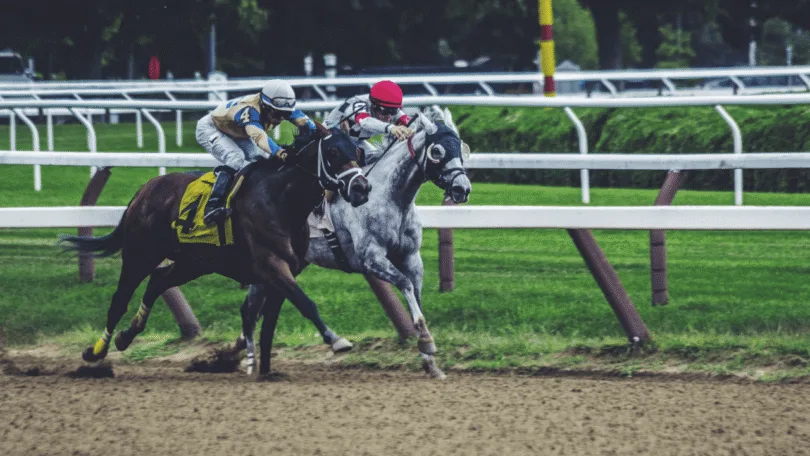The Preakness Stakes is fast approaching, and understanding the odds can give you an edge. You don’t need to be an expert—this guide breaks down how Preakness odds work, what affects them, and how to spot value. Whether you’re new to betting or sharpening your strategy, you’ll learn how to make smarter picks.
What Are Preakness Stakes Odds?
The odds for the Preakness Stakes are calculated using a pari-mutuel system. This means the odds are determined by how much money is wagered on each horse. The more money bet on a horse, the lower its odds become, making it the favorite. Conversely, horses with less money wagered on them will have higher odds, making them long shots.
Unlike fixed-odds betting (where payouts are locked in when you place your bet), pari-mutuel odds fluctuate right up until race time. This is why you’ll often see odds shift from the morning line (the opening odds set by track handicappers) to post time. Understanding this fluidity is crucial for reading between the lines and spotting opportunities.
How the Morning Line Works
The morning line odds are essentially a professional handicapper’s prediction of how the public will bet. For the 2025 Preakness, horses like Journalism (8-1) and Cornucopian (10-1) appear to have strong appeal based on their current morning line odds. However, these odds are just an educated guess and are not set in stone. Always track the odds closer to race time for a more accurate picture.
Real-Time Odds and Value Betting
By monitoring live odds, you can gauge which horses are gaining or losing favor. If a horse’s morning line odds start at 12-1 but drop to 8-1 closer to the race, it indicates heavy public interest. On the other hand, if a favorite’s odds lengthen, such as shifting from 3-1 to 6-1, it might suggest bettors are skeptical of the horse’s chances. These shifts can reveal potential value plays.
Why Odds Fluctuate and What Mean
The dynamic nature of Preakness odds reflects more than just betting trends. External factors such as weather, track conditions, and even late-breaking news about the horses or trainers can cause odds to change. Here are some key influences:
- Track Bias: Pimlico’s 1 3/16-mile dirt track is known to favor speed horses. If the track conditions on race day lean towards favoring early speed, horses with that running style may see their odds shorten,
- Bettor Sentiment: Big-name trainers like Todd Pletcher or Bob Baffert often attract bets purely based on reputation, sometimes creating artificially low odds on their horses,
- Recent Form: Horses coming off strong performances in Grade I races, such as the Kentucky Derby, tend to become race-day favorites.
For example, in 2019, War of Will entered with 4-1 morning line odds, but his starting odds settled at 5-1, reflecting last-minute adjustments in bettor sentiment.
Reading the 2025 Odds
The 2025 odds will be affected by a variety of factors, but one constant remains: the Kentucky Derby winner is typically the favorite. Here’s a snapshot of a few 2025 Preakness contenders based on current odds:
- Journalism (8-1): With a trainer like Michael McCarthy at the helm, Journalism’s morning line odds suggest strong public interest. Watch if his odds drop closer to the race.
- Cornucopian (10-1): Trained by Bob Baffert, Cornucopian’s odds may attract sharp money if bettors project Pimlico’s track favors his running style.
- Baeza (12-1): Trained by John Shirreffs, this horse might appeal to value hunters looking for an underdog with a track record edge.
If you’re looking for even bigger payouts, keep an eye on the long shots. Horses like Flying Mohawk (50-1) or Chunk of Gold (50-1) probably aren’t winning, but their odds could make them fun additions to exotic wagers like trifectas or superfectas.
Proven Strategies for Interpreting Preakness Odds
Understanding odds is one thing, but using them effectively is where the real skill comes in. Here are some strategies to help you read the lines and make smarter bets:
1. Look for Line Movements
Pay attention to horses whose odds shift significantly from the morning line to post time. A horse moving from 20-1 to 8-1 likely has experienced heavy backing from sharp bettors or insiders, indicating increased confidence in its chances.
2. Play the Board
Don’t blindly follow the favorites. Sometimes the odds for 2-1 or 3-1 horses don’t represent great value, especially if you see stronger contenders with longer prices. Balancing your bets between favorites and less obvious picks can improve your returns.
3. Follow Derby Performers
Horses that performed well in the Kentucky Derby usually fare well at the Preakness Stakes. However, keep an eye on non-Derby runners with strong recent form in high-profile Grade I races. These horses can yield excellent value as overlooked contenders.
4. Mind the Track Conditions
The track at Pimlico plays a significant role in determining which horses will excel. Rain, for instance, can change everything. Horses that have performed well on muddy tracks may gain the upper hand in wet conditions, even if their odds are longer.
The Preakness Stakes Betting Landscape
Newcomers to horse racing often start with straight bets like Win, Place, or Show—simple wagers based on where a horse finishes. As bettors gain experience, they often move on to exotic bets like Exacta (predicting the top two finishers), Trifecta (top three), or Superfecta (top four). These bets are harder to hit but offer bigger rewards, especially when longshots like Admiral Dennis factor into the mix.
What It All Means for Preakness Fans
Understanding the odds for the Preakness Stakes isn’t just about picking winners; it’s about recognizing patterns, identifying value, and staying ahead of the crowd. For the 2025 race, keep an eye on odds movements, closely follow news about horses and trainers, and consider exploring long shots for bigger payouts.
Whether you’re wagering for fun or trying to turn a profit, knowing how to read between the lines of the 2025 odds could give you that extra edge on race day.

